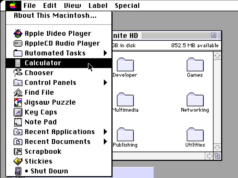
In most parts of the U.S., spring is on its way. If you’re still freaking out about what to plant and where, you’re not alone. If you’d like to try companion planting but are intimidated by which plants can be planted with which others, I’ve got a solution. Square foot gardening offers a ton of pre-formulated plans for almost any size garden plot and the method leans heavily on companion planting.
What is “square foot” gardening?
The goal of the square foot method is simple: Maximize the space you have by planting in such a way that you use all the above- and below-ground area efficiently; by doing so, you’ll also reduce the need for tilling and weeding. As a bonus, you’re likely to have less vulnerability in your plants to disease and pests, because you’re diversifying what you plant and not creating a big target for any one kind of flower or vegetable.
The Square Foot Gardening Method is a trademarked brand, invented by Mel Bartholomew, for which there are both official books and an official website, all chock full of resources. That said, plenty of people have written about gardening by the yard, by the foot, etc., and so the concept itself is generic.
Following Mel’s method, or freewheeling
Bartholomew has a pretty prescriptive way to do things: You start with a four-by-four-foot box, and fill it with a very specific blend of soil (vermiculite, compost, and peat moss or coco coir) and then put a literal wood grid on the bed, so you can clearly delineate the space.
If that feels a little too rigid for you, you can apply the square foot gardening methods on your own, and either ditch the grid altogether, or make a temporary one as you’re planting, using PVC pipe or one-by-two wood strips. Lay them one way and then perpendicular, and plant. When you’re done planting, remove the pipe or wood strips and move onto the next bed. While “Mel’s Mix,” as he calls it, isn’t a bad one, that’s a lot of vermiculite to source for the outdoors, and we now have a whole lot of other possible aerating minerals you can use instead, like perlite or volcanic rock. Peat moss is a dwindling resource so most responsible gardeners have moved onto coco coir. But this mix doesn’t have sand, which benefits carrots, and unless you know what’s in your compost, you could still be missing lots of minerals. It’s a great idea to ask local gardeners where they get their garden mix and rely on a garden center to deliver already made three-way or four-way mix.
Recommended products:
Square Foot Gardening and Companion Planting by Chauncey Cruz Jr. $21.47
Square Foot Gardening: New And Expanded by James Paris $12.95
Square Foot Planting Guide: Vegetable Gardening the Easy Way Audiobook by James Paris $4.99
Resources for square foot gardening layouts
While “square foot” might imply that every plant gets their own square, it’s really just a way to start conceptualizing the space each plant needs in units. Once you understand the space needed, you can start to slot in plants like LEGO. A tomato needs more space (one square) rather than beets, which can fit nine to a square. Most plants fall into one of these categories: small (16 plants per square), medium (nine plants per square), large (four plants per square) or extra large (one plant per square). The Square Foot Garden Method Foundation offers a few pre-made garden grids for free on their site. An amazing chart that will help lay out the space needs for all your common vegetables is at Garden in Minutes. This Garden Therapy post offers a few examples of how you can lay out a 16 square box. VegPlotter, an online platform to help you plan your garden, even has a new feature to help with square foot planning.
To simplify, try a seeding square
In most summer gardens, you’ll use a mix of seeds and starts. But for items that can be seeded over and over—like lettuce, radish, beets, onions, and carrots—you can use a seeding square. These handy grids have color coded holes to help you understand where to put your seeds to ensure they have the right space. The squares are always a square foot. If you’d rathermake your own seeding squares, you can find instructions here.
Square foot gardening helps you plan big by focusing small
Ultimately, the square foot method tries to interrupt how overwhelmed we get planning a whole garden by asking you to just visualize one grid and then repeat it. Once you get the hang of it, you can play with the grids. Until then, picking up or borrowing one of the many books mentioned above will give you access to all kinds of pre-made grids that will keep your garden looking full.








